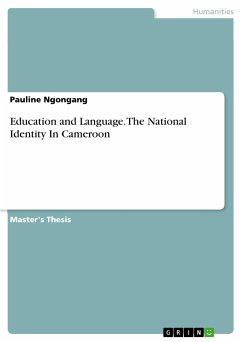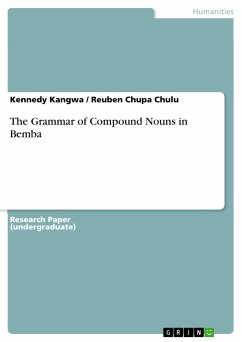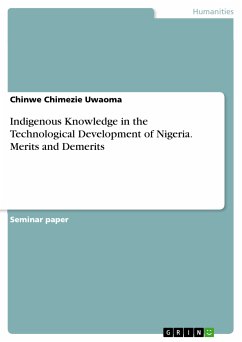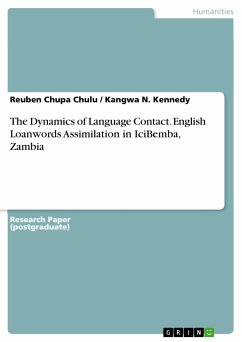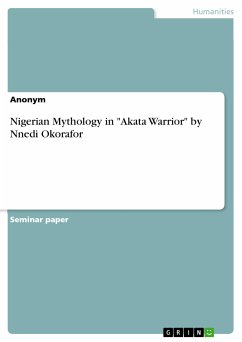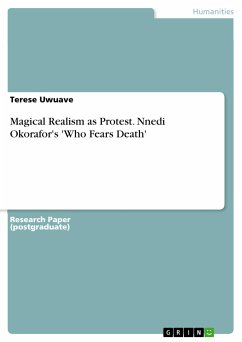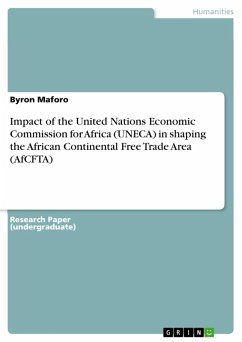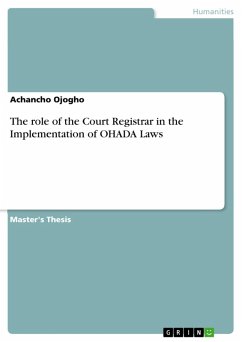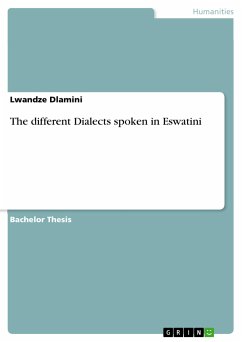
The different Dialects spoken in Eswatini (eBook, PDF)
Sofort per Download lieferbar
Statt: 27,95 €**
18,99 €
inkl. MwSt. und vom Verlag festgesetzt.
**Preis der gedruckten Ausgabe (Broschiertes Buch)
Alle Infos zum eBook verschenkenWeitere Ausgaben:

PAYBACK Punkte
0 °P sammeln!
Bachelor Thesis from the year 2020 in the subject African Studies - Linguistics, grade: 2.7, , course: Languages and literature, language: English, abstract: With a sociolinguistic scope, the present research work is aimed to investigate and examine SiSwati variations/dialects in the four regions of Eswatini (Hhohho, Lubombo, Shiselweni and Manzini). Since dialectal study is comparative, the SiSwati texts in the four regions have been compared to a standardized version of the language, that is, the SiSwati variant that is being taught in schools. The major linguistic focus of this study is mor...
Bachelor Thesis from the year 2020 in the subject African Studies - Linguistics, grade: 2.7, , course: Languages and literature, language: English, abstract: With a sociolinguistic scope, the present research work is aimed to investigate and examine SiSwati variations/dialects in the four regions of Eswatini (Hhohho, Lubombo, Shiselweni and Manzini). Since dialectal study is comparative, the SiSwati texts in the four regions have been compared to a standardized version of the language, that is, the SiSwati variant that is being taught in schools. The major linguistic focus of this study is morphological variation, lexical variation and syntactical variation. Four speakers, from the four different regions have been interviewed for this study. The results indicated that SiSwati, just like any other language spoken by a large speech community, has variations. Major linguistic differences have been noted in the construction of words, the choice of vocabulary used by the speakers, and the construction of sentences. Many scholars, like Khumalo have deliberated on the dialects of Emaswati. These studies mainly focus on the phonological variations. So far, little attention has been paid to awareness regarding other areas of dialect variation such as lexical variation and grammatical variation. This study will present the morphological, lexical and syntactic differences of the dialects of SiSwati in the different regions of Eswatini. The effort of this study is to research the different dialects is an effort to understand the differences in the society. It will identify the possible similarities and differences between the lexical items of these dialects and the standard SiSwati, also, with the aim of showing peculiarities as far as their morphologic systems are concerned.
Dieser Download kann aus rechtlichen Gründen nur mit Rechnungsadresse in A, B, BG, CY, CZ, D, DK, EW, E, FIN, F, GR, HR, H, IRL, I, LT, L, LR, M, NL, PL, P, R, S, SLO, SK ausgeliefert werden.




